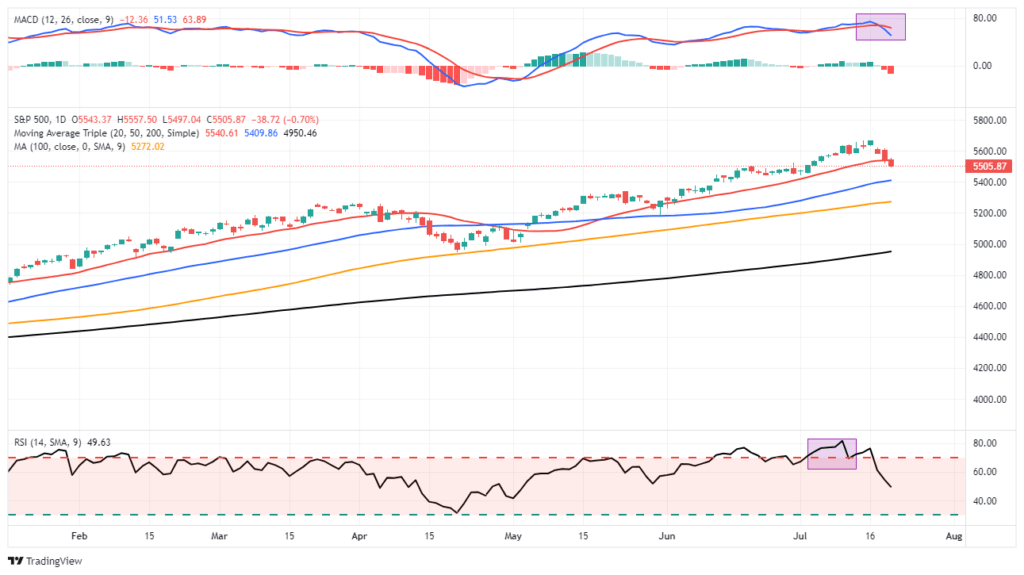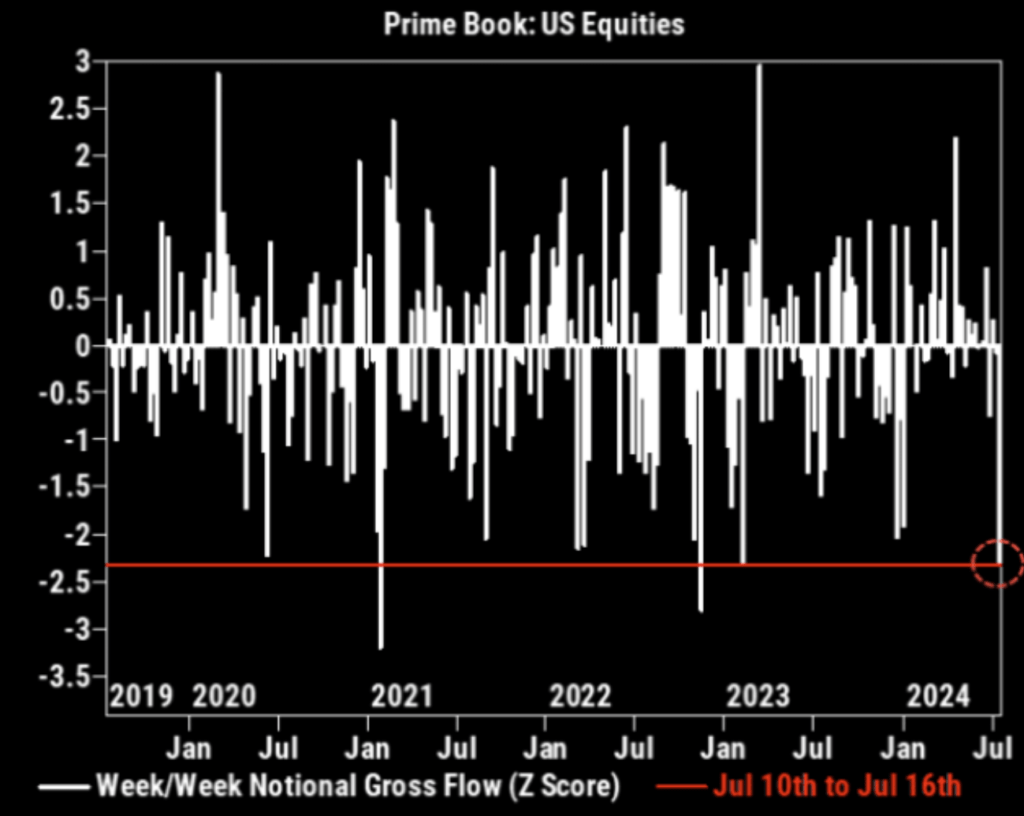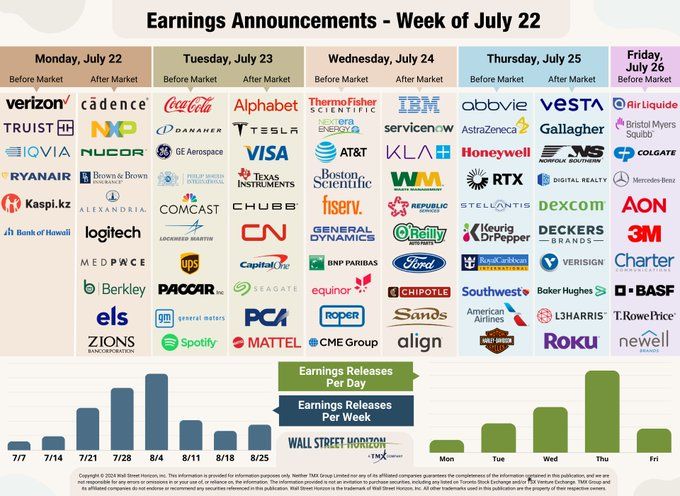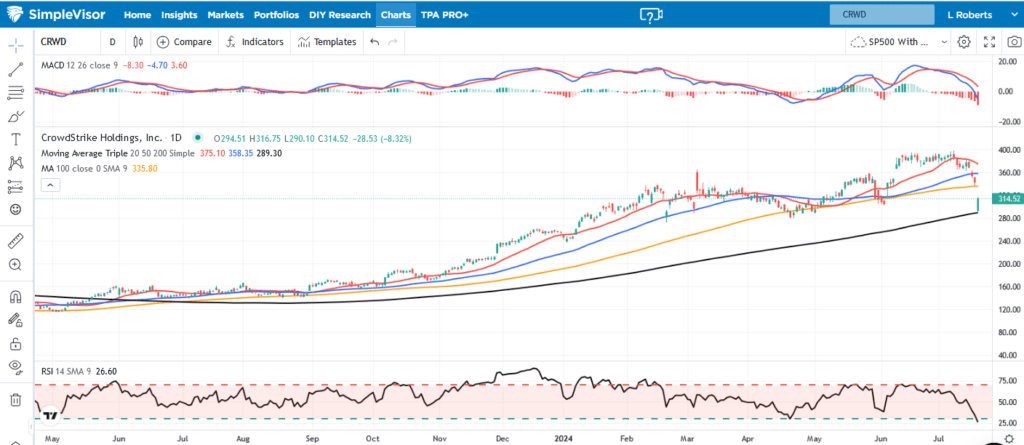Small Stocks Dominate Large Ones - What Comes Next?
Over the five trading days ending July 16, the small-cap Russell 2000 Index (IWM) had its largest five-day outperformance versus the S&P 500 (SPY) since the two ETFs started trading in 2000. In just five days, IWM beat SPY by nearly 10%. Despite the recent outperformance, the S&P 500 is still beating small caps by over 8% year to date. Therefore, the critical question for investors is what comes next. Might small-cap stocks continue to outperform in the coming weeks and possibly months? Also, do large-cap stocks continue to outperform as they have done all year? To answer the question, we created the table below.
The table shows the top 11 five-day periods of small-cap outperformance over large-cap stocks, including the recent period. In addition to the 5-day excess returns, we also show the relative performance of small caps versus large caps over the next 20, 50, and 100 days. On average, the small-cap index tends to slightly underperform the market after outperforming. However, there is a wide range of outcomes, as shown by each experience and the minimum and maximum excess returns for each forward return period.
What To Watch Today
Earnings

Economy

Market Trading Update
Last week, we noted that the market did flip the previous “sell signal,” with stocks topping 5600 for the first time. However, that move also pushed the market back into extremely overbought territory, and the deviation from the 50-DMA is quite significant. As noted:
“Such suggests that, as we saw in late May and June, the market will either consolidate or correct back to the 20-DMA. If the bulls can hold that level again, as they have, the market could continue to push higher. Such is possible given the current exuberance surrounding the Fed cutting rates. However, if the 20-DMA fails, as in early April, the 50-DMA becomes the next logical support, with the 100-DMA close behind. Such would encompass another 3-5% correction.“
On Friday, the market broke the 20-DMA and flipped the MACD indicator back onto a short-term “sell signal.” While we will likely see a rally early next week, a failure to close above the 20-DMA may suggest a further correction to the 50-DMA. A further correction is possible with the market oversold and triggering a fresh sell signal. Those triggers led us to take profits out of several positions this past week to hedge against a further decline. We will raise cash levels further if technical deterioration continues.
(Click on image to enlarge)

The big story this past week was the rapid rotation from the “Mega-cap” stocks to the Russell 2000. That rotation surprised many managers, leading to a rapid de-risking of portfolios. To wit:
“The de-grossing activity over the past 5 sessions is the largest since Nov ’22 and ranks in the 99th percentile on a 5-year lookback.”

While the short-term rotation could continue, we suspect that it will eventually revert back to the large-cap stocks as the economy continues to slow. There are several reasons for this.
- Large caps are generating earnings growth to support valuations, whereas small caps are not.
- Portfolio managers will hide in highly liquid large capitalization companies.
- 40% of the Russell 2000 is non-profitable, and earnings depend highly on a growing economy.
- Small and Mid-cap companies can not execute buybacks on scale.
- Large capitalization companies continue to benefit from passive investing ETFs, whereas Russell 2000 does not.
While it is certainly possible for a sustainable rotation to occur, the many headwinds facing the market into the end of this year suggest there is more risk than not.
The Week Ahead
The number of quarterly earnings reports will expand as we enter the heart of earnings season. However, many of the largest cap stocks and Magnificent Seven members will report next week. But Google and Tesla will report their earnings on Tuesday.
The economic calendar heats up later this week, with GDP on Thursday and PCE prices on Friday. The consensus is for 2% economic growth in the second quarter. The Atlanta Fed GDPNow is forecasting 2.7% growth for the quarter. Also of importance for the Fed will be the PCE prices index. As we saw with CPI, a negative number could warrant an unexpected ease at the July 31 meeting. The current estimate is for a 0.1% increase.
The Fed will be quiet this week as it goes on a media blackout ahead of the FOMC meeting on July 30-31.
CrowdStrike and Microsoft Have A Massive Glitch
CrowdStrike shares opened lower by nearly 15% on Friday morning as the cybersecurity company took the blame for a glitch that created widespread internet outages. The glitch was due to a software update and affected many services hosted on the Microsoft cloud platform. It appears the outage most affected the airline industry. Per NBC News, the glitch caused nearly 1400 flight delays and cancelations. Furthermore, is the following from their article on the subject:
Major carriers, including American Airlines, Delta Air Lines and United Airlines, all issued ground stops Friday morning citing communications issues. Passengers traveling to the United States from as far away as Japan have had their flights canceled. Delta has ordered a “global ground stop,” said Rep. Eric Swalwell, a member of the House subcommittee on cybersecurity.
(Click on image to enlarge)
Tweet of the Day
More By This Author:
Russell 2000 Explodes Higher As Rotation Takes Hold
Stock Rotations On Steroids
Can Mega-Capitalization Stocks Continue Their Dominance?
Disclaimer: Click here to read the full disclaimer.







